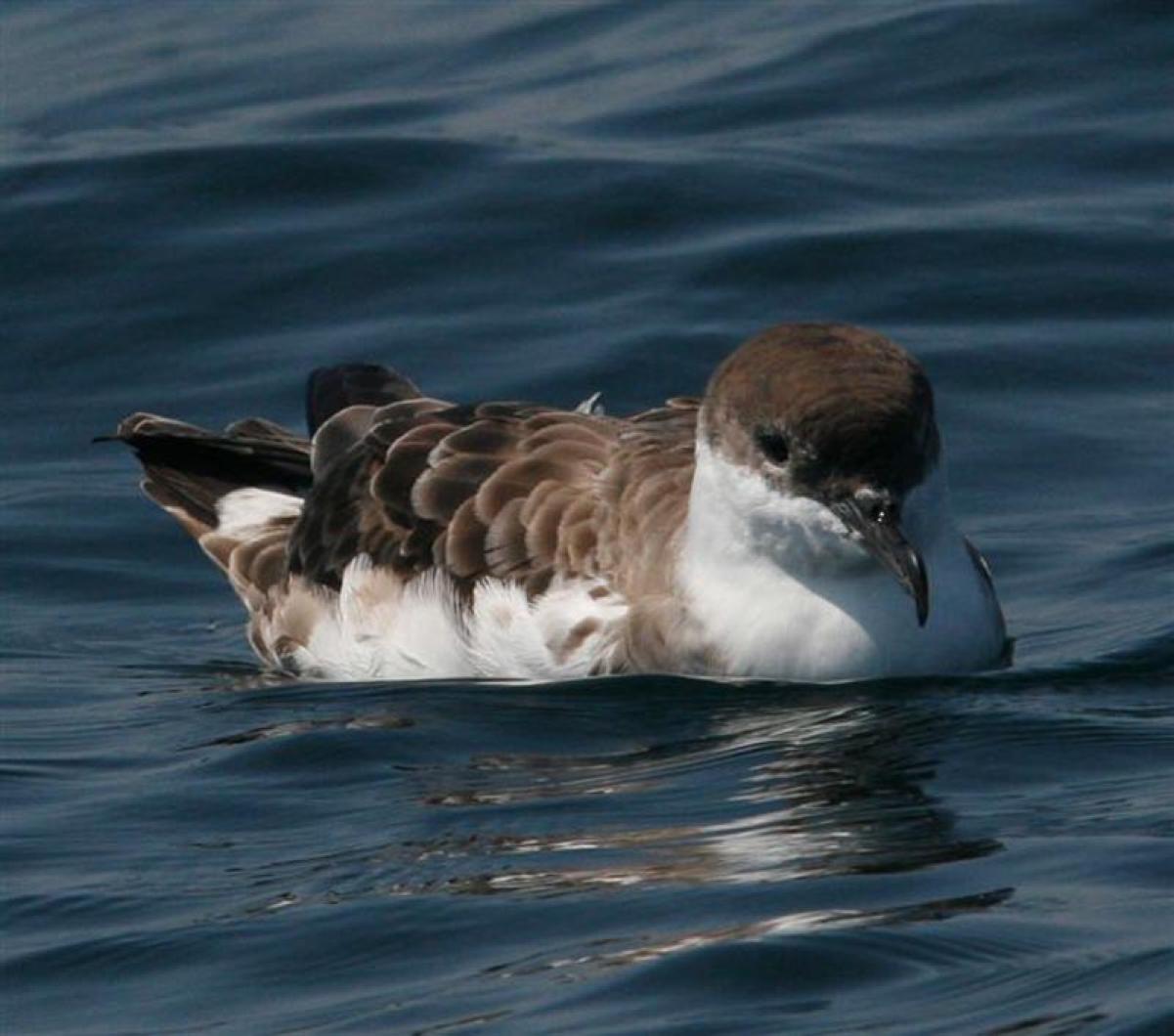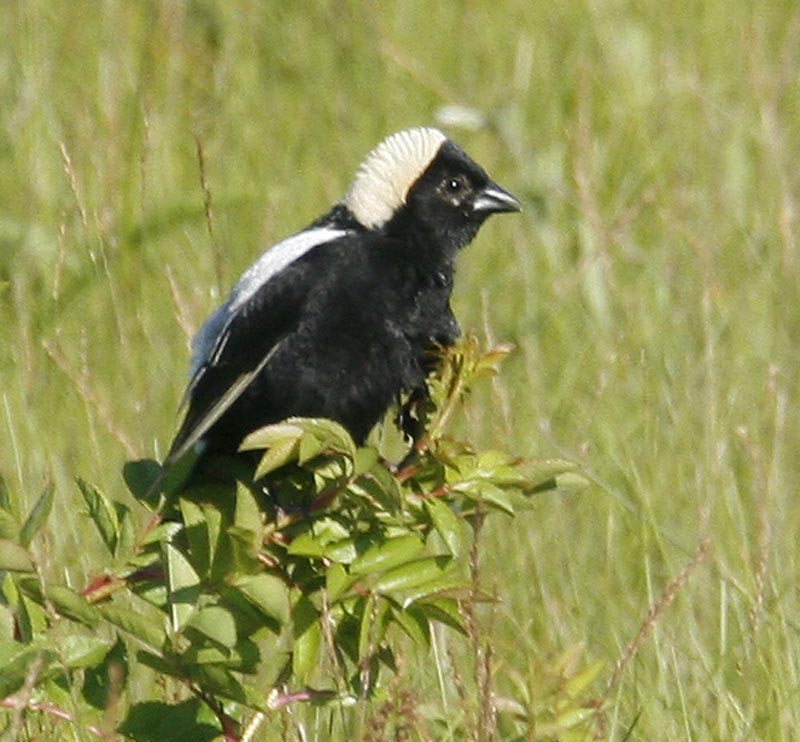The four pairs of black skimmers on Norton Point are causing great excitement. Two families have four chicks, one family has three chicks and a fourth is on eggs. That brings the total to 11 black skimmer chicks. This is dynamite as the Vineyard has never produced a single black skimmer in the past! Questions about skimmer nesting behavior have been pouring in, so here goes.
A couple of interesting facts surfaced while researching black skimmers. They have interesting nicknames such as cut-water, knifebill and scissorbill (wasn’t there a movie?). The eyes of skimmers are dark brown, surrounded by the black cap. The pupils, which are vertical, can be narrowed into tiny slits to avoid damage from the glare of the sun off the water! Sure beats sunglasses! The courtship activity of the scissorbills is not well-known. Guess we’d better check it out next spring and write it up! A female lays between four to seven eggs, usually four to five in the simple scrape in the sand which constitutes the nest. The incubation, done by both male and female (amazingly, the male actually spends more time on the nest), is 21 to 23 days. Both parents fish for their young. The catch is regurgitated for the chicks at the nest. Now for the cool tidbit from Kenn Kaufman’s Lives of North American Birds: it seems that young skimmers wander away from the nest fairly soon after hatching. If threatened, the young make a hollow to “hide” in by kicking up the sand and lying prostrate in this quickly-made hollow.
Young black skimmers’ bills are the same length at birth, but within three weeks the top mandible begins to grow faster. The most-asked question is, when will these chicks fly? They will take to the wing between 23 to 25 days after hatching, so watch for the first flight sometime in late July or early August.
On July 17 I had the pleasure of attending one of the summer film series put on by the Martha’s Vineyard Film Society. The film by Jeffrey Kimball and Pam Hogan entitled Birders: The Central Park Effect was fabulous. It was fun, beautiful and gave a great picture of birding through the four seasons in New York’s famous Central Park. It will be playing often on HBO channels through the end of July, including July 21 and 23. You can check the schedule at hbo.com.
Bird Sightings
Jackson Keith had an incredible experience on July 15. He and a buddy were diving off the North Shore. When the two divers surfaced they were greeted by a greater shearwater. Both Jackson and his buddy had cameras. Jackson tried to photograph the curious shearwater as it swam toward him and eventually nipped his hand. Unfortunately, the camera failed. Jackson’s buddy was able to photograph Jackson, the greater shearwater and the floating diver’s flag.
On July 16 Jeff Bernier sent a series of fascinating shots of a common tern at Norton Point that was “skimming” for food. One could not tell if the tern was skimming for bait or insects in the shallow water. There are two theories to this unusual behavior. One, the tern was being a copycat and had watched the black skimmer and thought he would try their fishing technique. Or, two, the water was so shallow where the tern was fishing that it adapted its fishing method for shallow water. Where there is a will there is a way!
Jeff Bernier also reports seeing a family of black-crowned night heron at Edgartown Great Pond on July 12. On July 16 Jeff counted 20 semipalmated plovers on Norton Point.
Page Rogers and Nat Woodruff were kayaking on Sengekontacket Pond on July 16 when they spotted a black skimmer hunting along the shoreline. Page was wondering if there might be a pair nesting on one of the Sengekontacket islands. Hopefully, if others or young skimmers are seen, they will be reported. During their paddle, Nat Woodruff took a great photograph of a willet on the Rod and Gun Club sign saying “Gun Range, Keep Out”.
Fishermen and boaters should keep their eyes open around Gay Head Cliffs as Scott Stephens has a hunch that there might be young there.
Good news on the South Shore harriers. Larry Hepler and Adam Moore both have seen harriers hunting over Quansoo Farm. The best news, however, comes from Larry, who observed a food transfer on July 14 between a male and either a young or female on the border of his property and the land bank property at Quansoo. On July 17 Larry watched three harriers in the air over the same area while sailing.
Chris Murphy and Charlie Finnerty both reported hearing bobwhites on different parts of the North Road. Chris heard and saw them on the Chilmark-West Tisbury border and Charlie off Tea Lane. Both men commented that they had not heard these quail in many a year.
Susie and Woody Bowman watched an adult cedar waxwing feeding young near their Panhandle home in West Tisbury. They also spotted a brown thrasher on July 11.
Tom River had an interesting visit. A belted kingfisher flew into his Tea Lane yard, ogled his small pond, landed on the roof of his house briefly and then flew off. This could be young of the year exploring, although the report reminded me that kingfisher species in other parts of the world are forest dwellers. Tom also noted that on July 17 he and Barbara were alternately serenaded by a whip-poor-will and screech owl from about 8:30 p.m. until they fell asleep around 10:30 p.m.
On July 14 Sarah Mayhew was dismayed to find that the least tern colony that was thriving in early July at Quansoo was wiped out. The Mass Audubon monitor told Sarah that skunks had wiped out the eggs.
Angie Waldron e-mailed to say she had visited Penikese Island School on July 16 and reports that the black-backed and herring gull colonies are still present and producing young. Angie added that there is a nesting colony of snowy and great egrets, as well. I knew great egrets had to be nesting in the neighborhood. The Massachusetts Wildlife people who are monitoring the Island told Angie that the nesting shorebirds and terns are having a tough time surviving as the black-backed gulls are raiding the nests of the shorebirds and terns.
Please report your bird sightings to the Martha’s Vineyard Bird Hotline at 508-645-2913 or e-mail to birds@mvgazette.com. Susan B. Whiting is the co-author of Vineyard Birds and Vineyard Birds II. Her website is vineyardbirds2.com.





Comments
Comment policy »